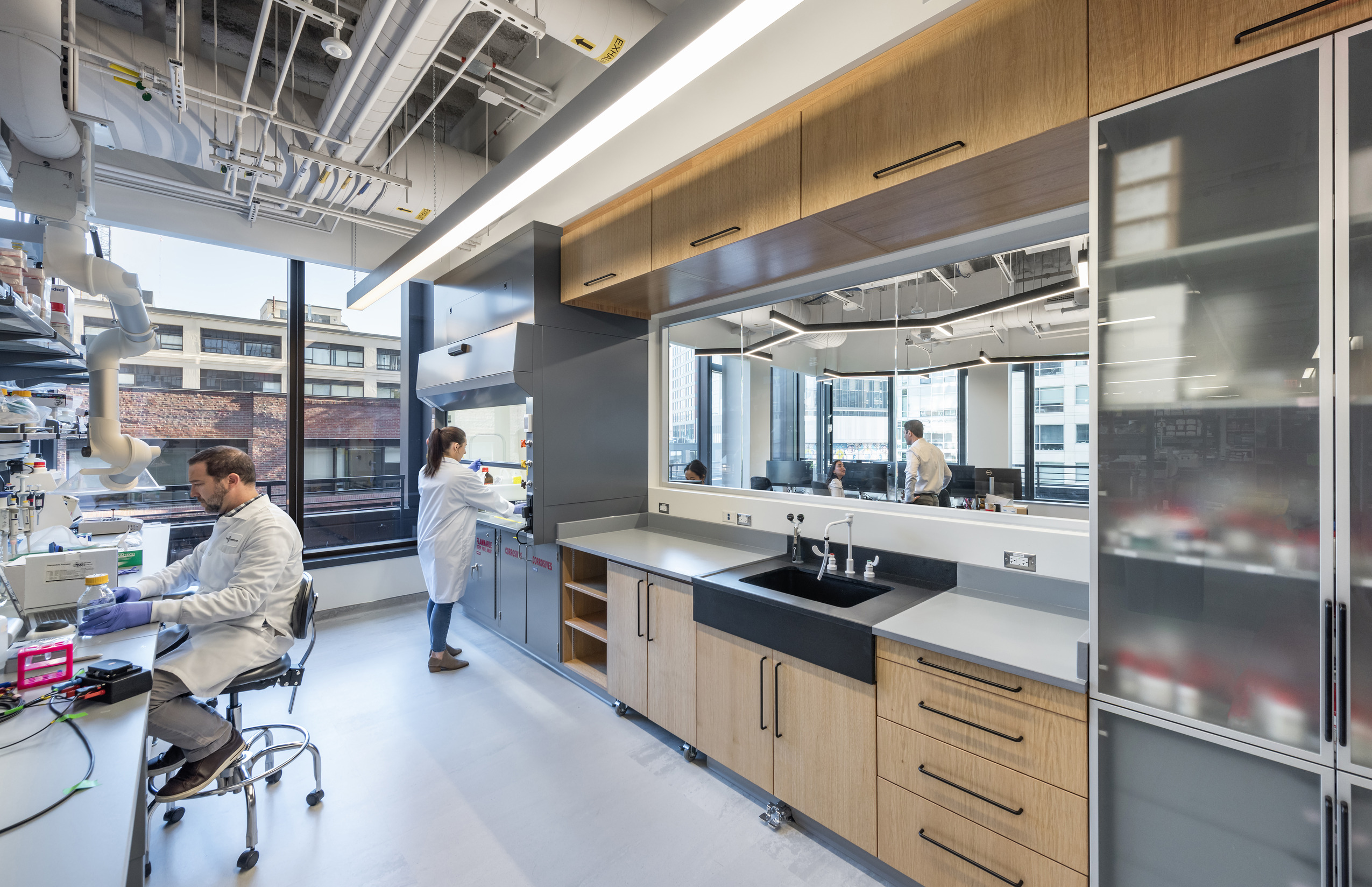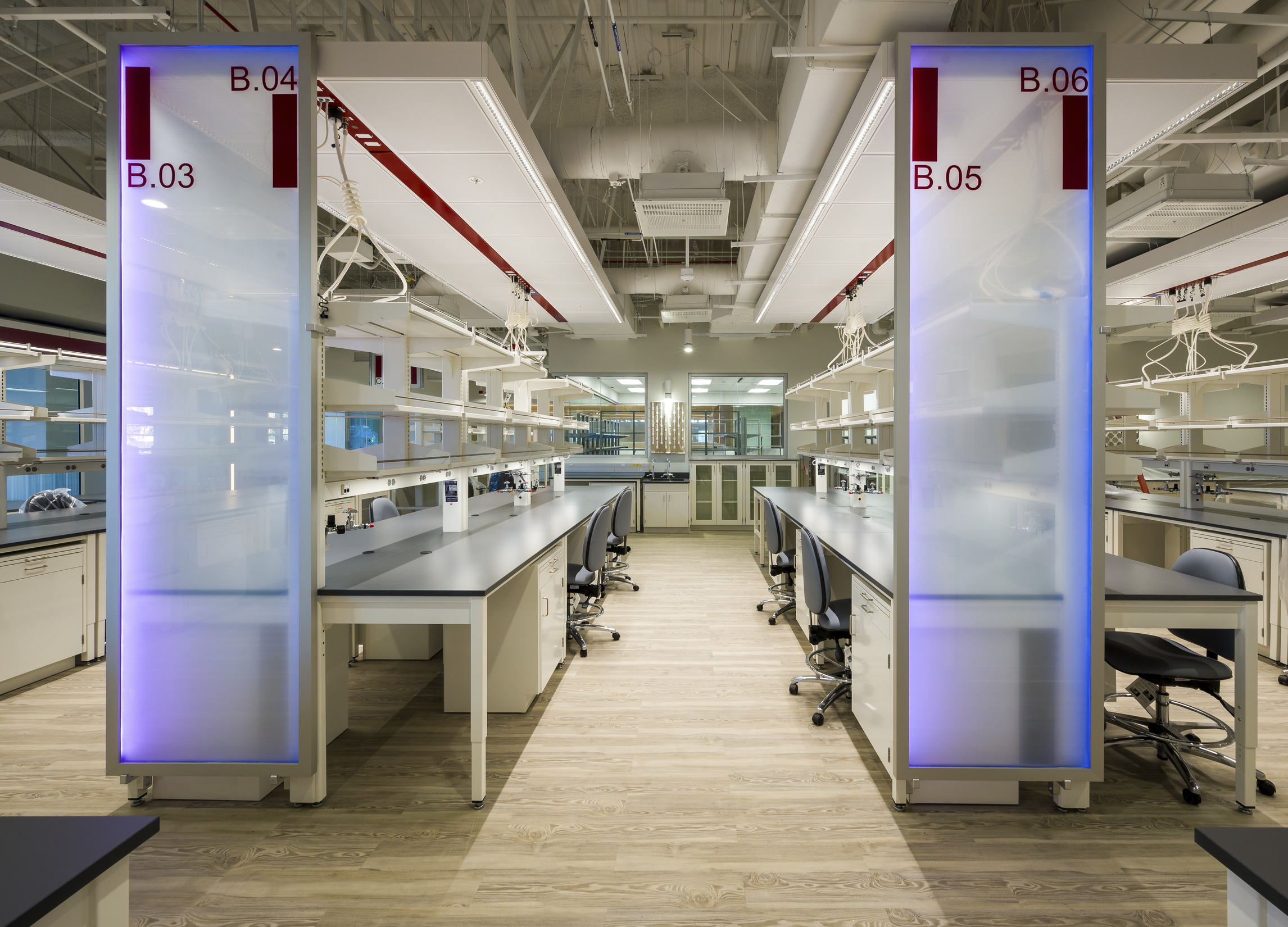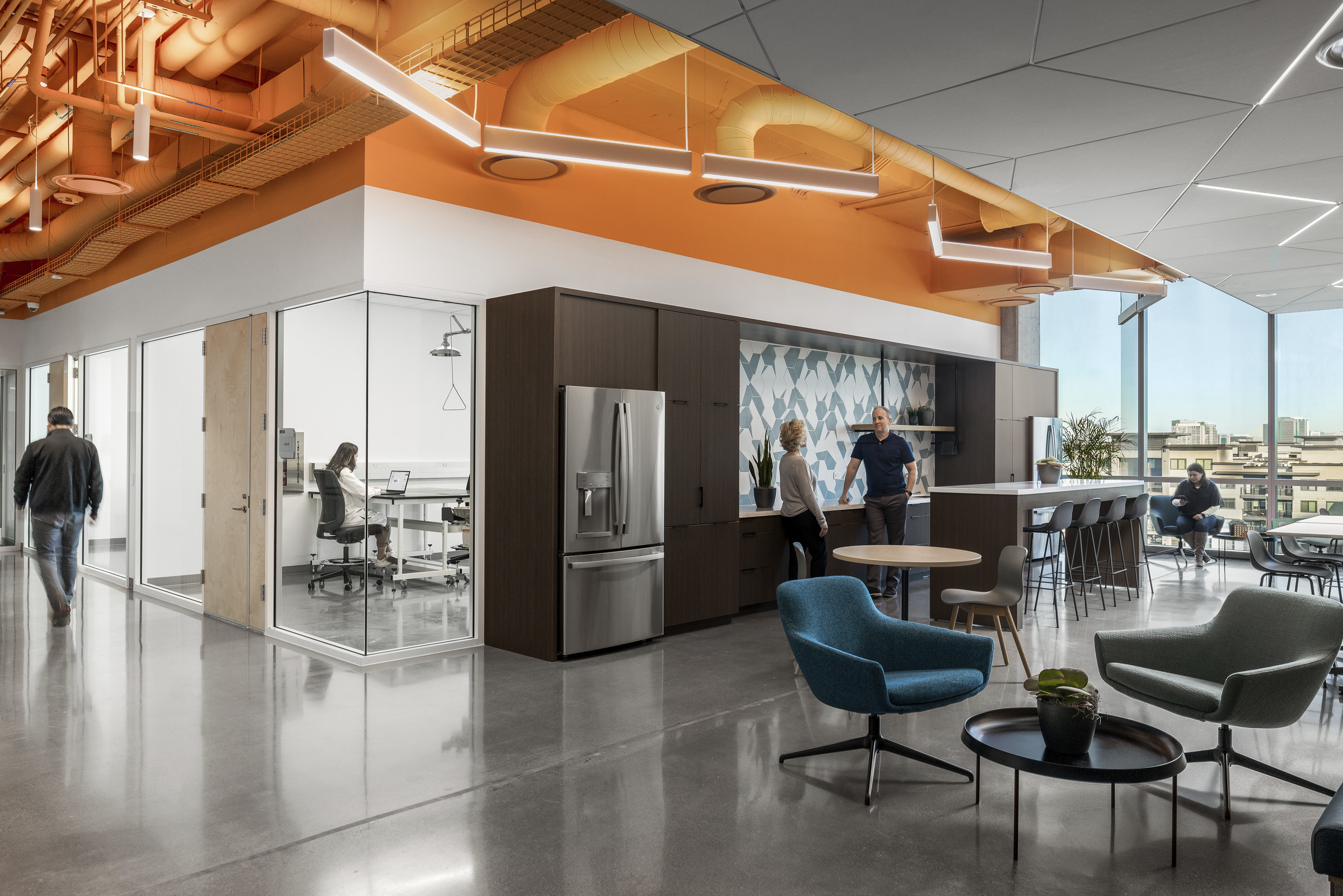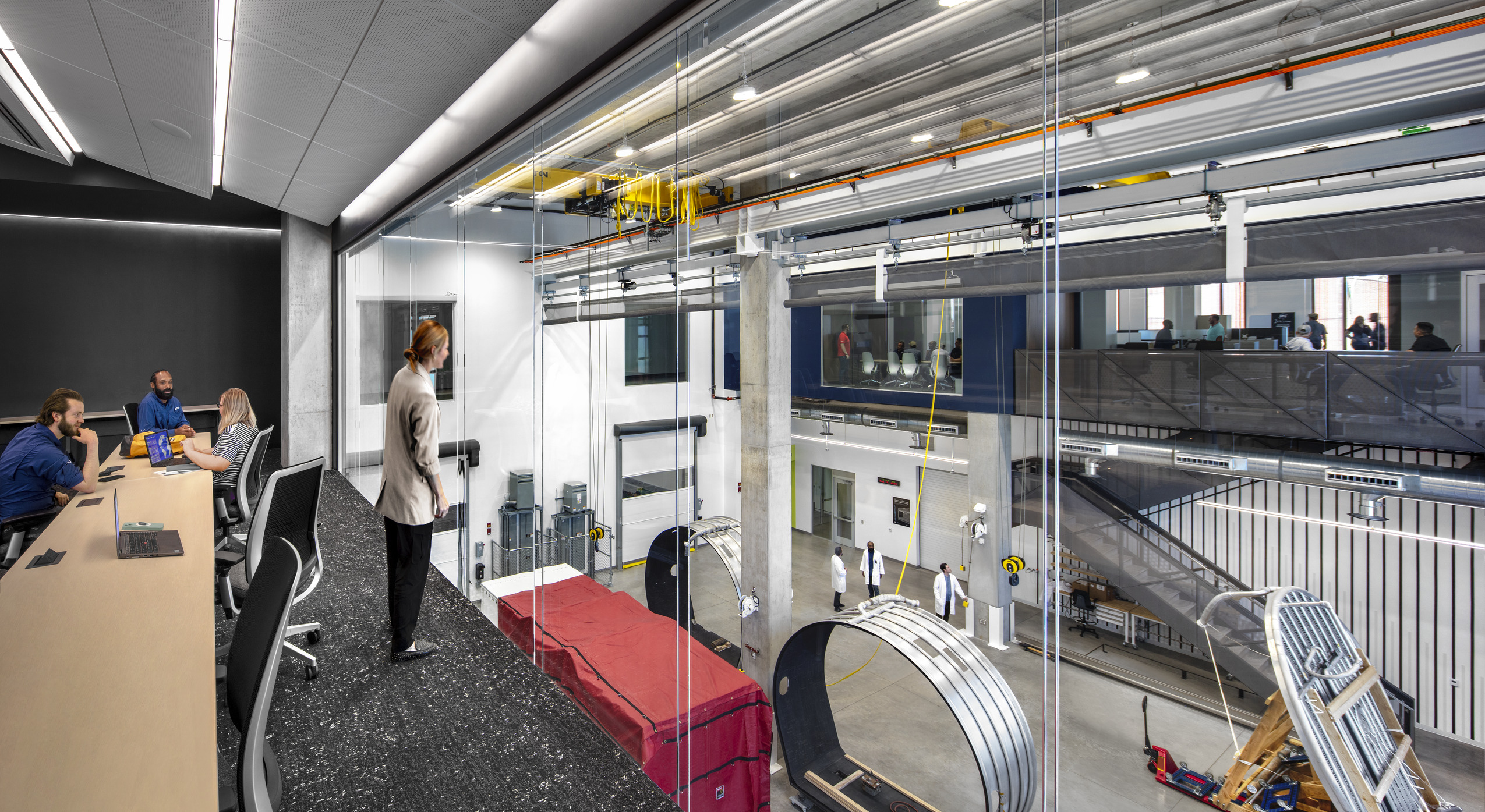A New Era of Wellness in Labs
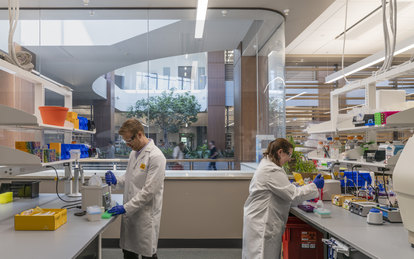
When we think back to the dreary, desolate research labs of the early 20th century, it’s clear that laboratory design has come a long way. While we’ve made remarkable strides in improving safety, efficiency, and the incorporation of novel technologies, those measures are compulsory and should be the minimum baseline for researchers who spend an inordinate amount of time in too-often sterile labs. It is only through an interdisciplinary mindset where all aspects of a lab are addressed holistically that wellness can be elevated through mindful planning and design.
The COVID pandemic catapulted forward a paradigm shift in laboratory wellness. SmithGroup has conducted several studies and surveys in the years since to get a better picture of the impact the pandemic had on work and our wellbeing. The results revealed both positives and negatives: People valued the flexibility and the productivity they gained by being able to focus on work when and where they wanted. Yet they also felt isolated and disconnected, missing opportunities for synchronous work, networking and social connection.
These insights carry forward new ways of thinking and planning. Some takeaways to consider that support people in their work and their wellbeing follow.
Positive Company Culture
Today’s workforce, particularly millennials and Gen Zers, want their professional life to have meaning. They’re looking for a company with strong values and a sense of common purpose, trust and community. Providing spaces that allow organic opportunities for connectedness can support this culture. A central communicating stair, a lounge, and a music or recreation area are all ways to build an authentic human connection. Amenities that encourage work-life balance and healthy choices—such as workout areas, meditation rooms and secure bike storage—have been linked to a 22-percent reduction in burnout and a 19-percent increase in job satisfaction. Studies also show that when we encourage a state of play, we are more relaxed and receptive to learning.
Choice and Accessibility
Just as office spaces have become more agile, research environments also can become more adaptable. A variety of seating arrangements allows individuals to choose a space that supports the type of work they plan to do that day. Offering the option to sit near coworkers or near leadership dissolves silos and flattens hierarchies. Having choices (quiet versus convivial, light versus dark, for example) supports different work styles—especially helpful for neurodivergent individuals, who make up an estimated 15 to 20 percent of the U.S. population.
Ergogomics can have a significant impact, too. Inside and outside the lab, providing adjustable height work surfaces and seating is a relatively simple solution to give workers the ability to adopt multiple postures and move freely throughout their workday—which studies suggest can decrease discomfort by 25 percent and increase productivity by 15 percent.
Customized lab casework at the Harvard Wyss Institute serves the client's specific functional needs while also allowing for flexible uses. In a “Lab As a Kitchen” concept, mobile carts on castors are easy to move around and change out or use as an impromptu huddle space.
When incorporating moveable casework in large open labs, floor patterning, ceiling detail or signage are useful wayfinding tools. In a Life Sciences Building for a global medical device company, backlit panels provide alpha-numeric guidance and a writable surface for collaboration. Keep in mind that colorblindness is prevalent, so it's best to provide wayfinding cues in multiple formats.
Visual Connectivity and Safety
While Offering sightlines into and out of interior spaces maintains the safety and integrity of laboratories while still providing engagement among workers. The design of the Wexford Connect Labs—an incubator and coworking space in Phoenix, Arizona—is inspired by its walkable neighborhood, the Roosevelt Row Arts District. Each lab has its own "storefront" fronting a main thoroughfare that leads to touchdown areas, local art installations and even interior pocket parks focused on biophilia, all designed to connect researchers to one another and to the creative community just outside their doors.
At the Applied Research Building at the University of Arizona, visual connectivity maintains a human scale in a building that houses the highest high bay labs in the country, advancing research and manufacturing related to lower Earth orbit and space missions. It carves out innovation spaces adjacent to clean rooms, so teams can collaborate in a safe environment while maintaining a visual connection to the work going on within the lab. Rather than designing an enclosed box where payloads are assembled and assessed, the high bay becomes a central focal point, visible from Mission Control, office/meeting areas and an observation deck. It creates an atmosphere where everyone can perform their duties and, at the same time, recognize their role as part of the greater mission.
Daylight and Views
While dark, windowless labs were once the default, today we hardly need data to acknowledge the positive impact that daylight and views can have on wellness. Along with creating a more pleasant work environment, natural light also reduces eyestrain, blurred vision and headaches that can result from intense computer and lab work—up to a 26-percent reduction, according to the quantitative data.
Although plants typically aren't allowed within the lab, we can incorporate biophilic patterns there to provide a connection with nature, as well as adding plants in nearby workspaces. Studies show that biophilic elements in the workplace are associated with a 15-percent increase in wellbeing.
Air Quality and Acoustics
Labs can be noisy places. This is a critical issue to address: Studies indicate that reducing noise can improve task performance by 66 percent and reduce stress by 27 percent. Acoustic baffles are one of several techniques to employ and can be integrated with overhead lighting.
Air exchange rates are paramount to ensuring proper air quality in laboratories, as are monitors and sensors in these spaces. Studies indicate that improved air quality, along with thermal comfort, can reduce absenteeism by 35 percent and increase productivity 8 to 11 percent.
Technology Integration
The COVID pandemic was an unexpected change agent, necessitating a rapid transition to remote and hybrid work models that quickly became relied-upon technology. While laboratory work isn’t so mobile, many of these tech tools could very well usher in greater research collaboration with global colleagues. We also see the acceleration of technological innovation and integration within the laboratory environment. Repetitive tasks like pipetting and dispensing liquids are increasingly handled by automated systems, which not only improves accuracy but also wellbeing by relieving workers of tedious chores.
Not since the Industrial Revolution has technology advanced at such a rapid pace. The adoption rate of evolving technology is growing exponentially, too. From breakthroughs in biotechnology, to artificial intelligence, to wearable computers, and even the vast amount of data available from fitness trackers, futurists believe we are in a technology super cycle that some are calling “The Great Transition.” And no matter what their demographic, everyone experiencing this era is a member of “Gen T.”
Health and science workplaces stand at the forefront in this new frontier. Advancements in technology will continue to disrupt workplaces and work styles. Yet they’ll also lead to safer laboratory environments, better health and greater professional satisfaction for lab workers. By fostering a “learn it all” culture rather than a “know it all” culture, together Gen T can reap the many benefits of this new era of wellness in labs.
